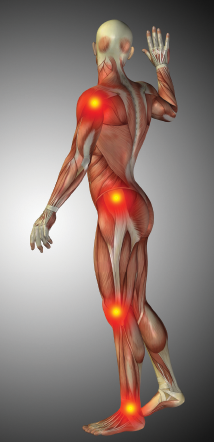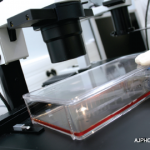
design36/shutterstock.com
WASHINGTON, D.C.—Ongoing investigation into the disease mechanisms of inflammatory myopathies is generating needed information for the development of potential future therapeutic targets, and current data from clinical trials have shed light on myopathy concerns in different cohorts of patients. These issues were all discussed in a session titled Muscle Biology, Myositis, and Myopathies I during the 2016 ACR/ARHP Annual Meeting.
Learning in the Lab
Joseph LaConti, MD, PhD, Rheumatology Fellow, Jackson Memorial Hospital, University of Miami, opened the session describing ongoing research on the disease mechanisms underlying anti-synthetase syndrome—a syndrome encompassing a clinical spectrum of diseases including myositis, interstitial lung disease, Raynaud’s phenomenon, symmetric non-erosive arthritis, mechanic’s hand and fever.
Building on previous research that showed a correlation between disease activity and reactivity of serum anti-Jo-1 antibodies (antibodies that target histidyl-tRNA synthetase [HRS]) to the full-length recombinant HRS, Dr. LaConti described current research conducted to refine this correlation through a more detailed examination of antibody binding to subfragments of the HRS protein in order to discover new antibody epitopes associated with defined clinical manifestations.
According to Dr. LaConti, the study revealed a more precise epitope for Jo-1 antibody. Specifically, the study found an increased binding of the Jo-1 antibody to portions of the N terminus of the protein in patients with inflammatory myopathy and Jo-1 antibodies.
In addition, the study found that patients with either joint swelling or Raynaud’s disease had a higher binding affinity of Jo-1 antibodies for these more precise epitopes compared to patients who did not.
“The current study suggests that more specific epitope recognition patterns may be linked to particular clinical features of the anti-synthetase syndrome, providing the rationale for future longitudinal studies relevant to disease prognosis,” said Dr. LaConti.
Inflammatory Myopathies
Further research on the disease mechanisms behind idiopathic inflammatory myopathies was described by Ana Barrera, MD, Instituto Nacional de Ciencias Medicas y Nutricion Salvador Zubiran, Mexico City, Mexico, who presented data from a study looking at the role of pathogenic cytokines in disease development.
Building on previous data showing a high prevalence of anti-Ro52/TRIM21 antibodies in patients with myositis, Dr. Barrera and colleagues assessed whether there is a differential production of cytokines associated with Ro52/TRIM 21 levels in patients with recent onset idiopathic inflammatory myopathies.
The study found that Ro52/TRIM 21 levels were decreased in different cellular subsets of patients with idiopathic inflammatory myopathies, said Dr. Barrera, adding that this decrease is associated with defective ubiquitination and proinflammatory cytokine synthesis. However, the study found no correlation between Ro52/TRIM 21 levels and anti-Ro52/TRIM21 autoantibodies.



